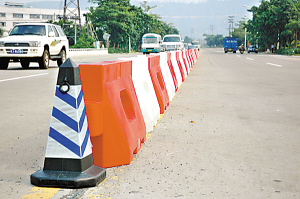
The General Administration of Quality Supervision, Inspection and Quarantine announced on May 15 that since the implementation of the Road Traffic Safety Law in the past decade, the General Administration of Quality Supervision, Inspection and Quarantine has organized more than 700 recalls and recalled more than 15 million defective vehicles, which has played an extremely important role in improving the level of road traffic safety in China. . In terms of vehicle quality and safety, China has already formed a relatively complete system of mandatory national standards for automobiles. As of now, China has formulated and issued 117 mandatory national standards for automobiles.
On May 1, 2004, the Road Traffic Safety Law came into force. In the same year, the AQSIQ, together with the National Development and Reform Commission, the Ministry of Commerce, and the General Administration of Customs, jointly issued the “Regulations on the Recall of Defective Automotive Products†departmental regulations, marking the first defect in China. The official birth of the automobile recall regulations created a precedent for China's product recall system. In 2012, the State Council promulgated the "Regulations on Recalling Defective Automobile Products", which further improved the recall system. According to statistics, in the past decade, the General Administration of Quality Supervision, Inspection and Quarantine has organized and implemented more than 700 recalls, involving more than 15 million defective vehicles.
The road traffic law also clearly requires the socialization of safety inspections of motor vehicles. In 2006, the General Administration of Quality Supervision, Inspection and Quarantine issued the "Administrative Measures on the Supervision and Administration of Motor Vehicle Safety Technology Inspection Organizations," which provides security at the technical inspection level from the perspective of institutional innovation.
According to statistics, as of the end of 2013, more than 3,500 security inspection agencies in China had obtained qualification certificates, were allowed to conduct safety technical inspections of motor vehicles, and issued notarized data to the public according to law. More than 3,500 motor vehicle security inspection agencies are responsible for the security inspection tasks of China's hundreds of millions of motor vehicles. The quality inspection departments have strengthened supervision and have made a good inspection point for the protection of road traffic safety.
In the past decade, the quality inspection and standardization department has also actively revised various standards related to road traffic safety and has issued direct and indirect technical standards as many as several hundred.
Liu Zhaobin, chief engineer of the General Administration of Quality Supervision, Inspection and Quarantine, said that in terms of protecting occupants and pedestrians in vehicles, the mandatory national standards for safety belts and child restraint systems for adult cars in China have reached the international advanced level. Standards for car brakes, steering, lighting, wheels, and tire assemblies, as well as seats, door locks, and other national standards have been basically completed to protect the safety of various personnel.
In terms of vehicle quality and safety, China has formed a relatively complete mandatory national standards system for automobiles, covering basically all aspects of safety, environmental protection, energy conservation, and theft prevention. According to statistics, as of the end of March 2014, China has formulated and issued 117 mandatory national standards for automobiles, including 34 active safety technical standards, 29 passive safety technical standards, 30 general safety technical standards, and 24 environmental protection and energy conservation standards.
Liu Zhaobin said that in terms of road safety, China has also formulated a series of standards to improve road facilities, design, construction, safety evaluation, signs, signs, and safety protection facilities, which have played a basic supporting role in ensuring road traffic safety.